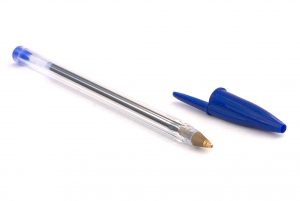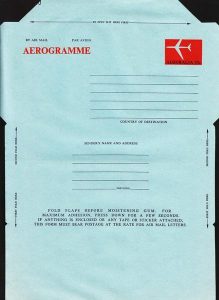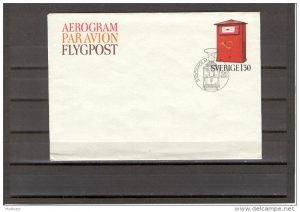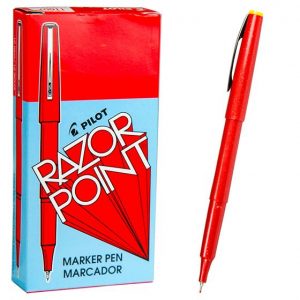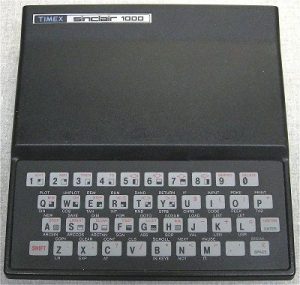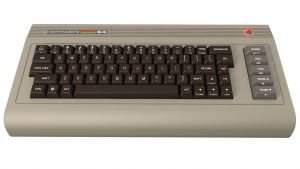As best I can recall, my tools-of-the-trade got zero upgrades between college graduation (1975) and our first home computer (1982).
During that period, the cheap ballpoint pen was my go-to in the writing department, like this Bic Crystal.
Long-hand was my primary writing mode. My penmanship . . .
I just realized that’s a sexist term. I think we’re stuck with it. “Penpersonship” will never fly. What about “penship”?
I digress. Let me start again.
Long-hand was my primary writing mode. My penmanship never lost the backward slant of my youth, but during my Great European Adventure, I cultivated a minuscule writing style that allowed me to put copious amounts of information onto an aerogram. Are aerograms still a thing?
Every country’s aerogram had its own “look”, but all aerograms had the same basic design. Here’s an example from Australia.
The reverse side of the aerogram and, more obviously, the bottom 1/3 of this side are blank. My aerogram handwriting-style produced letters that were smaller than the print you see below the address lines. By the time I was done with a letter, every spec of blank space on the ‘gram was filled. Then I folded it in thirds, addressed it, posted it. Here’s a fully-folded 1975 Swedish aerogram. Ah, yes, I remember them well.
Back in the States, I briefly made my living by reading astrological charts. I generated my own very cool chart template (if I do say so myself), then printed out a whole passel of blank chart forms on crisp, yellow, parchment-style paper (24″ x 18″). At the end of a 2-hour, in-person reading, I would hand the client a key to the chart symbols (typed/xeroxed) and a report (hand-written version of the reading), both tucked inside the chart itself, which I rolled up and tied like a scroll.
All calculations and drawings were done by hand, which is why I’m bothering to mention this. I am not an artist. In order to create clean, precise lines and symbols, color-code the various aspects (trines, squares, conjunctions, etc.), and letter the charts in an aesthetically-pleasing script, I required task-specific writing tools. My weapons of choice were Pilot Razor Point pens in red, blue, green, and black.
In 1982, the Timex-Sinclair 1000 (TS1000) hit the market as “the first computer under $100” (the price tag was $99.95). Not a negligible sum for folks like us, but a darn good price for a personal, home computer. Left to my own devices, who knows when I would have gotten around to buying one? Fortunately, my far-more tech savvy husband saw huge potential in the new technology. Timex claims they sold 600,000 TS1000s in the US by early 1983. One of those 600,00 came home with us.
The TS1000 used a form of BASIC for a primary interface/programming language. It had a membrane keyboard. A black-and-white display. No storage; if I’m remembering right, the only way to store anything was on cassettes. And it had a teeny 2 KB capacity.
No memory, not much software that could run on 2 KB, a sluggish keypad … so what was the TS1000 good for? Apparently, it was great for introducing smarties like my husband to the world of computer programming. He set himself to the task, and in no time had written a program that did all my astrological calculations for me. It was brilliant. Worked perfectly, and such a time saver!
The TS1000 prompted Commodore International to initiate a trade-in program: turn in your alternate-brand computer and get $100 toward the purchase of a Commodore 64. I can’t recall exactly when we sealed that deal . . . but when I made my first foray into fiction in 1986, it was on this machine.
Next time, more about The First Foray

